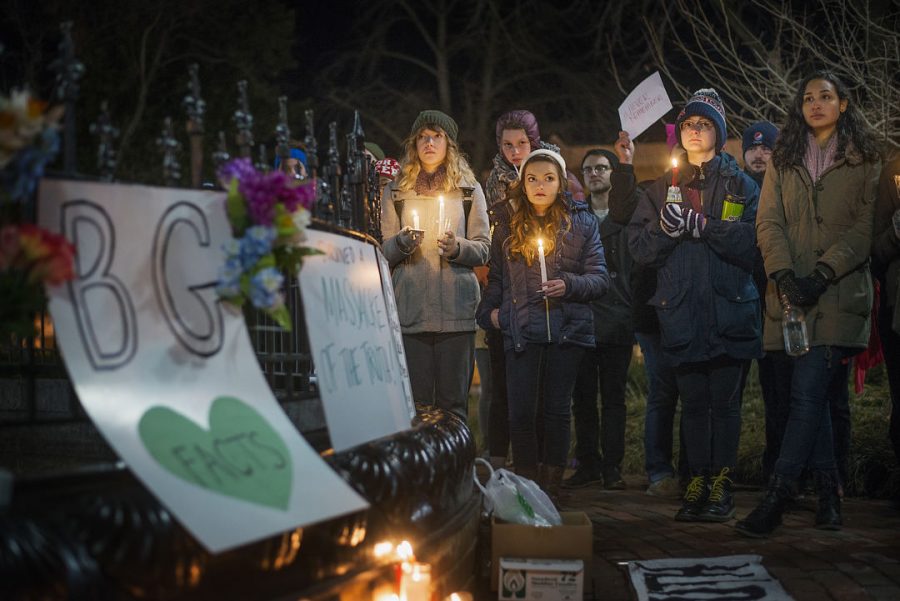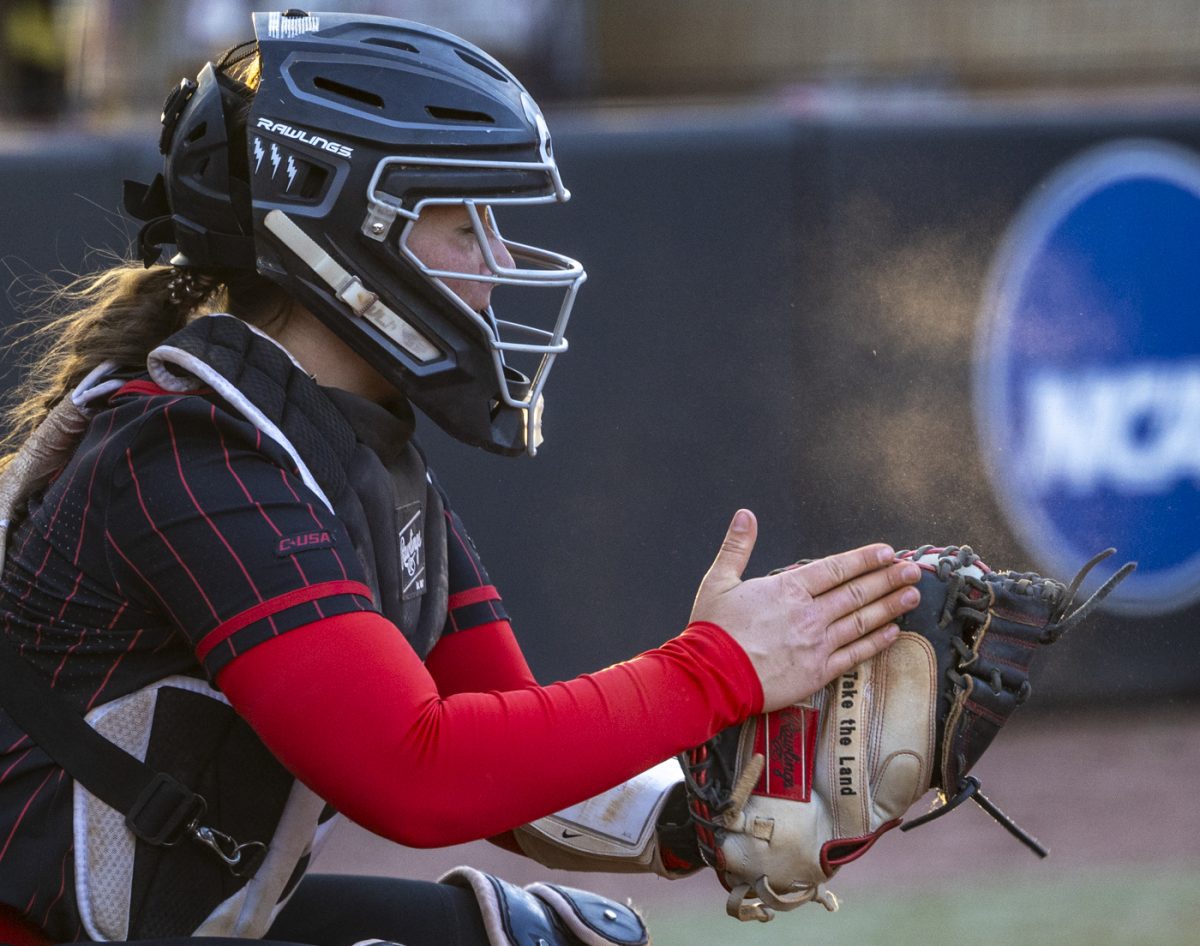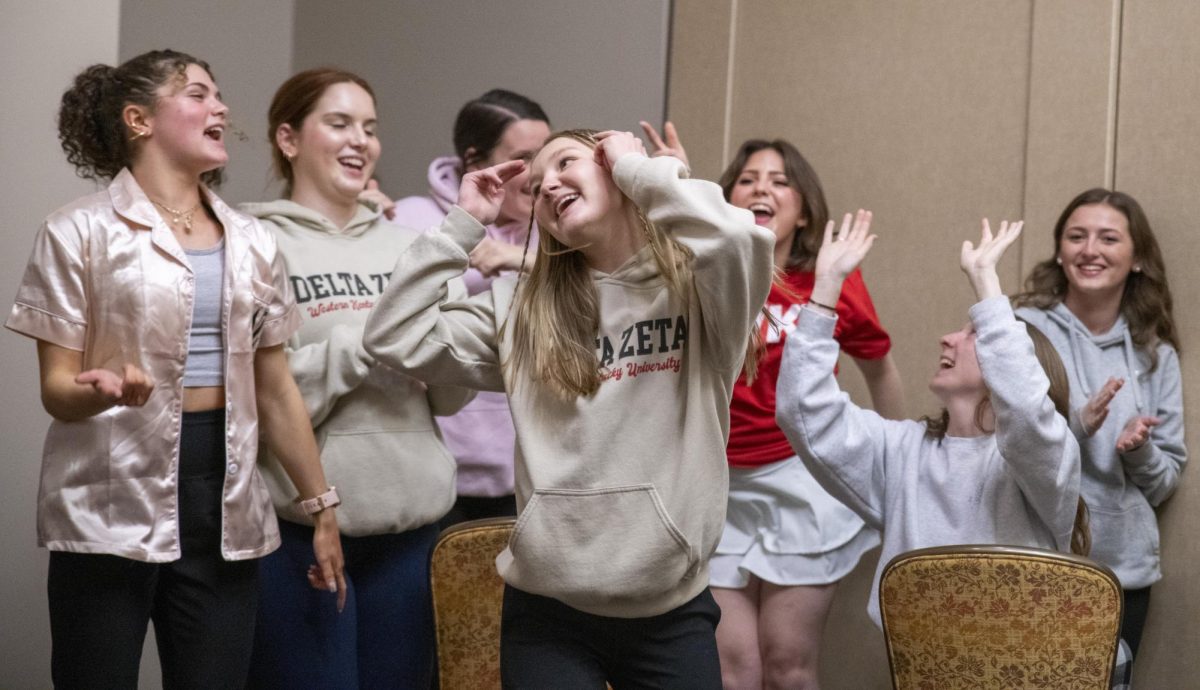OPINION: Remembering the real victims of the #BowlingGreenMassacre
February 3, 2017
Kristi Branham, director and associate professor of the Gender and Women’s Studies program at WKU, recalls the day of the #BowlingGreenMassacre quite clearly.
Branham had breakfast at Judy’s Castle, took a walk at Lost River Cave, ran over to the Greenwood Mall for a sale at Macy’s and dropped off some donations at the International Center of Kentucky in Bowling Green. Even today, remembering what happened the fateful day of the #BowlingGreenMassacre is hard for Branham, and she’s not alone.
KJ Kerr, a WKU senior, recalls where she was that fateful day as well. She was at Spencer’s Coffee and the line was out the door with people all waiting for a chai tea latte as people began growing incredulous fighting his or her way up the line before Spencer’s Coffee ran out of supplies.
“This is actually what ignited the scene to begin with, which eventually lead to the events that have now been exposed,” Kerr said.
Everyone remembers the day differently and yet, each person remembers it all the same.
Six years after that eventful day, citizens of Bowling Green are still recovering from a tragedy few will forget and even fewer will ever remember happening.
Kellyanne Conway, counselor to President Donald Trump and woman who runs your local spinning class because she’s just that good at it, in an MSNBC interview which aired yesterday night, claimed a massacre occurred in Bowling Green in 2011.
The claim was met by a loud resounding, “What? I don’t remember that ever happening.” Which is the appropriate response to a blatant lie and an event which did, in fact, not happen. Conway was defending Trump’s executive order barring the flow of refugees and travelers from seven predominantly Muslim countries.
At first, people were unsure if Conway meant Bowling Green, Kentucky or Bowling Green, Ohio or just somewhere convenient she could claim a massacre took place. Fortunately, she let us know later she was talking about Bowling Green, Kentucky. Truly, this city has not seen such fame since a sinkhole ate up a bunch of Corvettes at the National Corvette Museum on Feb. 12, 2014.
However, what did happen in 2011, which Conway is referring to, is two Iraqi citizens, Mohanad Shareef Hammadi and Waad Ramadan Alwan, were indicted on federal terrorism charges. The two men attempted to send money and weapons to Al Qaeda in Iraq, according to a release from the Justice Department in January 2013.
Both men pleaded guilty to the federal charges, according to the New York Times. Hammadi was sentenced to life in prison while Alwan was sentenced to 40 years in federal prison, with a life term of supervised release.
The case is still ongoing as the Bowling Green Daily News has continually reported on the incident and its aftermath.
This event has also been used as a basis for Trump to claim his executive order is similar to what President Barack Obama did in 2011 when he slowed the Iraqi refugee processing in response to the specific threat. The Washington Post rated Trump’s claim Three Pinocchios.
Later, Conway said she misspoke and meant to say “Bowling Green terrorists” instead of massacre. A common mistake since the two sound so similar. Sometimes I also misspeak and create a massacre that never happened, but who amongst us hasn’t done that?
Also, “Bowling Green terrorists” will be the opening act for #BowlingGreenMassacre tonight at Rocky’s.
But then it got even better because Bowling Green Mayor Bruce Wilkerson issued a statement on the massacre. The man actually felt the need to make a statement because what else occupies the thoughts of an elected official other than making it clear a massacre didn’t happen in your city? Tourism would plummet otherwise.
“I understand during a live interview how one can misspeak, and we appreciate the clarification,” he said.
What Conway probably doesn’t know is Bowling Green and WKU are both home to vibrant refugee and immigrant communities. And while the Internet has taken to remembering the victims of the fake massacre, there are victims all the same of Trump’s executive order.
For instance, Elnaz Jalali, a 27-year-old WKU student from Iran, had her world turned completely upside down.
“After five years staying in the U.S., investing my money, my time, my energy and my knowledge over here, if I wake up one day and someone says: ‘what you did over here is done and you should go back home,’ what do I do after that? What is going to be my future? I feel so terrified about it,” Jalali said to one of our reporters.
Bowling Green was due to welcome 40 Syrian refugees, but now the ban has put a hold on this until further notice.
So yes, there are victims of the #BowlingGreenMassacre, just not the one Conway is talking about.
Currently there’s a Bowling Green Victims Fund set up to route donations to the American Civil Liberties Union, which is amazing, but let’s focus on a more local level.
Bowling Green is home to the International Center of Kentucky and since 1981 it has helped resettle “over 10,000 refugees, victims of human trafficking, asylees, parolees, and others with similar status, as well as other immigrants from thirty (30) countries around the globe.”
The International Center has programs for refugee resettlement, education, job preparation, interpretation and translation services and immigration services.
Help us remember the #BowlingGreenMassacre by making a donation to the International Center. Because there’s no better way to help us as a community mourn than to help the people who need it the most right now.













